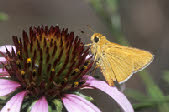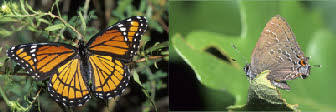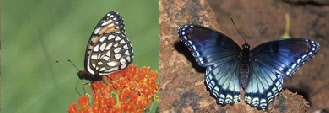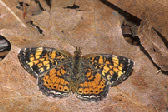The Butterflies of the World Foundation
A Non-





Brephidium exilis, near La Joya, Soccoro County, New Mexico, 1 October 1998
Ref
#: I-
Western Pygmy-
Brephidium exilis, Boisduval, 1852
Subfamily Polyommatinae
Taxonomy
The family Lycaenidae is a large and varied worldwide group that has 4,000 to 6,000
species depending on the ever-
All photographs, artwork, text and website design are the property of The Butterflies of the World Foundation (unless otherwise stated) and are protected under national and international copyright laws. Photographs, artwork or text on this website may not be reproduced in any way without prior written consent of The Butterflies of the World Foundation.

Brephidium exilis, female ovipositing, Wichita Mountains National Wildlife Refuge,
Comanche County, Oklahoma, 19 July 2010 Ref
#: I-
General Information:
Brephidium exilis belongs to the subfamily Polyommatinae. This butterfly is found, sometimes in huge numbers, in alkaline areas such as deserts, salt marshes and wasteland. In some literature, it is recognized as the world’s smallest butterfly.
Lifecycle:
The larval food sources include pigweed (Chenopodium album), saltbush (Atriplex sp.) and others in the goosefoot family (Chenopodiaceae). Males patrol over the host plants all day to find receptive females. Females lay eggs all over the host but particularly on the uppersides of leaves. Caterpillars eat all parts of the plant. Chrysalids hibernate.